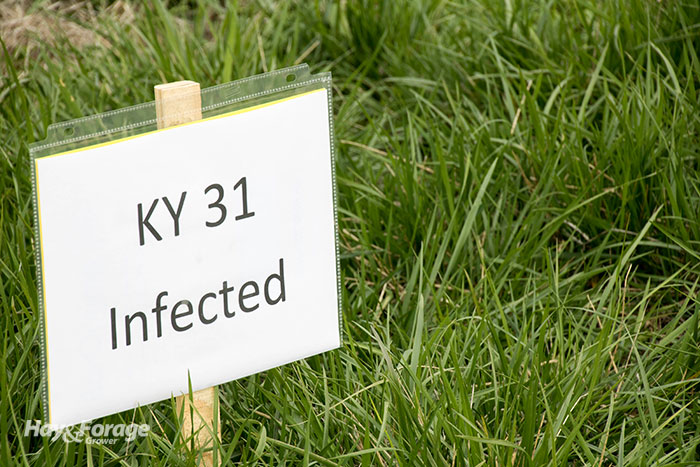
Farming is a game of Plan B’s as often Plan A needs to be scrapped because of weather or other uncontrollable events. Such is the case for converting existing toxic tall fescue stands into pastures with novel tall fescue.
The preferred conversion process entails spraying the existing toxic stand with a nonselective herbicide such as glyphosate, no-tilling a smother crop of summer annuals that can be used for hay production or grazing, then spraying the field one more time to kill any remaining toxic fescue before the new seeding of novel-endophyte tall fescue seed is made.
Craig Roberts, an extension forage specialist with the University of Missouri, notes that drought conditions may not be conducive for making a successful smother crop seeding. Not only is germination and plant development at risk, but the crop may also use up limited soil moisture reserves.
Roberts’ preferred Plan B approach is to spray, wait, and then spray again before seeding. However, for this to work, seedhead development during the spring growth needs to be prevented before the first herbicide treatment. The waiting period should be at least six weeks between the first and second spray applications.
Roberts and other forage specialists across the Fescue Belt have found the spray-wait-spray method to be effective based on research done over the past 10 years. He emphasizes that the system only works on pastures that have had seedheads removed before seed becomes viable. If seedheads are not removed, the seeds fall to the ground and contaminate the pasture with toxic tall fescue growth.
Start small
Replacing toxic Kentucky 31 tall fescue with nontoxic, novel-endophyte varieties offers multiple animal health benefits, including improved weight gain, reproductive performance, and milk production.
Roberts emphasizes that the payback to convert pastures to nontoxic varieties is enormous, and returns are realized for years to come. However, renovation is costly, so the forage specialist recommends renovating only about 10% to 20% of available grazing acres each year. The primary cost to the farmer is having land out of production for a period of time.
The Alliance for Grassland Renewal offers forage schools each year to help farmers make a successful conversion to novel-endophyte tall fescue varieties. For more information, visit their website at grasslandrenewal.com.

